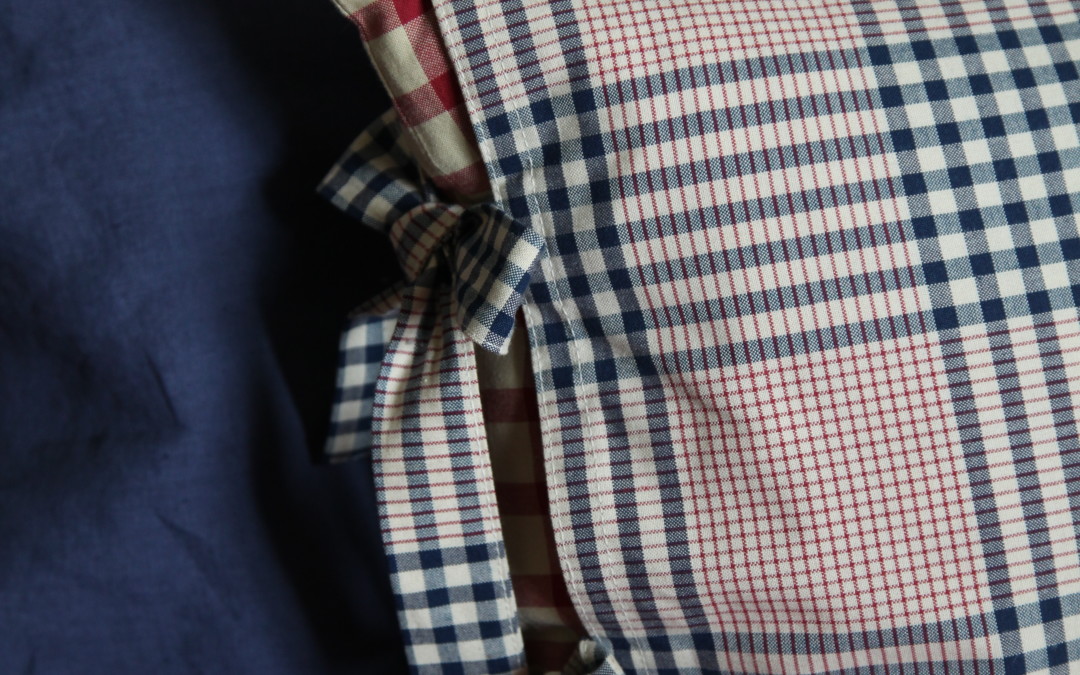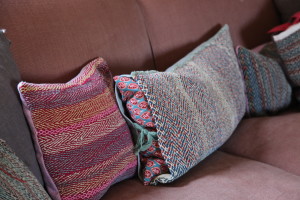Cushion covers that stand the test of time or should it be: How to make armour for your cushions!
If like mine, your household is children oriented, for even some of the time – your own or a second nursery for all friend’s and family’s little ones – the sight of cushions scattered across the floor of the living room, or being dragged out into the garden, is an all too familiar sight. These are covers that are immensely practical – home accessories to bear the brunt of everyday use – washable fabrics that sleeve over perfectly good cushions, and tie at the sides. This means that you don’t have to keep replacing covers that have fallen victim to chocolatey fingers or the odd red wine stain..
Making these covers
Making these covers is one of those things that is just worth doing. For one, you can use cushions that you already have (the one’s I have used here are simple scatter cushions), meaning that however old and ragged they may be, a bright new cover brings them back to life. The one’s I have used here are 20 years old, but you wouldn’t notice, and they spend most of the summer on the swings and floor, and last week I saw one strapped around the bar of a grown up’s bike….
And here is a gingham cover that we’ve tied over an ancient liberty print cushion that had seen better days. The only thing that may be worth mentioning and doing is drying out your old scatter cushions in an airing cupboard overnight, maybe adding a spruce of lavender. By morning, they will be fresh and as good as new. So really, making side tie cushions doesn’t cost much at all. They are machine stitched with just a few straight lines, simple and good fun to make. So you shouldn’t feel too worried if you are less confident using a machine – they can just as easily be completely hand sewn.
The best thing about these is that they are notoriously tough, mainly because the fabric I have used is quite literally, bomb proof. You don’t have to worry too much about them- they can withstand rough and tumble, mud, rain and shine, and still remain in good shape and condition. In fact, the ones in this picture have been previously used as slide bumpers amongst other, less demanding functions.
Use denim or canvas, gaberdine or ticking, inherently tough, fabrics. These checks were from Osborne and Little, but what’s most important is a good tough cotton that is washable. Ian Mankin keep good stripes and checks and they sell online, its also worth having a hunt around any good fabric shops and picking up short ends, as you need so little for each cushion.
I like to use pattern, when the colours are good – these in particular, were some of the joys brought back from Rajasthan. Vintage textiles that had already been turned from skirts into quilted covers and now, half way across the world, the remnant of those are bringing a touch of life and sunshine to our garden furniture.
As always though, half the fun is in playing around with whichever fabric patterns suit your style and home. It’s worth noting though that detailed, bright patterning, isn’t always necessary – the side tie effect adds just enough to the design to make the plainest of fabrics look lovely.
If you fancy giving the side tie cushion a go, check the store and subscribe to our Cutting Room Floor for our free monthly projects.
Pick up those quirky odds and ends that you see on your travels – they will always find a home !
To download this project from the store, click here.https://designandmake.net/product/brooklyn-cushion-with-tied-sides/


